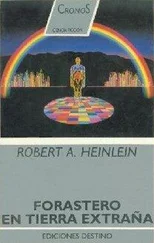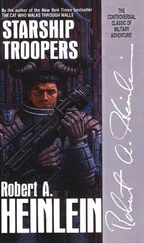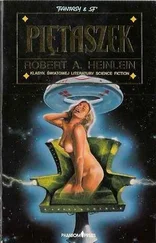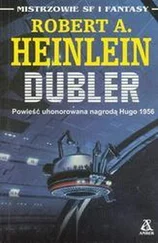But that was okay, too, because by the time he had it fully in place and the mortar had set, it was already starting to show tiny cracks. Because I kept on playing. And kept on playing.
It took longer to penetrate than it would have in his normal mindset. But eventually, even in his depression he couldn’t help but notice that I had been playing for something like a minute and a half by now.
Without stopping to breathe.
Even once.
A fellow amateur historian of music, he caught on to what I was doing faster than most would have. And in spite of himself, he started to grow interested….
The technique known as “circular breathing” is in fact nothing of the sort. But it looks like it to a civilian.
If you’re doing it right. This is vastly easier said than done.
I hold with the school of thought that says modern music (as they were now calling it, again ) copied it from the Aborigines of the continent Australia, on Terra. So it could be as much as 47,000 years old—a little under a thousand generations . The Australian didgeridoo is an immensely powerful but intrinsically limited instrument; like haiku, it finds enormous beauty within severe constraints. Denied the endless variety offered by pitch, however, it finally began to lack the bandwidth to carry concepts as sophisticated as those that some didgeridoo players wished to express. There were only so many things, and combinations of things, you could do before you ran out of air and had to start a new phrase.
So they abolished breathing.
Obviously they did nothing of the sort. What they did was improve it. All the necessary parts were right there: all they had to do was train and exercise them. Not to say that was easy.
What I actually do when I “circularly breathe” is to use my cheeks as a storage bellows. It’s a four-step process, that begins during exhalation:
1. As I start to run low on air, I puff my cheeks as far as possible, a configuration called a Dizzy for more than one reason.
2. I slowly contract my cheek muscles, using the air trapped in my cheeks to keep the sound coming out the other end of the pipe—while simultaneously inhaling through my nose. Very like learning to wear a Mars-mask, and no harder.
3. If I’ve timed it right, my cheek-bellows empty out at the same time my lungs fill up. My soft palate closes, and once again it’s my lungs pushing air out the horn.
4. My cheeks return to normal embouchure, until my air starts to run low again. Repeat from 1. above.
During all this time, of course, my fingers are busy doing even more difficult things to turn all that air into pleasant sounds. They say that anybody can learn to do it… with enough beatings.
Anyone who’s studied the saxophone has heard about circular breathing, and most of us have attempted it, and a few have persisted long enough to get it—six months of daily practice, minimum—and then played around with it a little. Hardly anyone keeps it up, once they’ve proved to themselves that they can do it. There’s little point: the number of compositions in the database that call for it can pretty much be counted on the fingers of one foot. The last composer of merit to mess with it much was probably MacDonald, just before the Prophet took everyone’s breath away for a century and a half; his “Thaumaturgy” is definitive.
I’d developed an interest in it about a year before the Disaster—for much the same reason the Aborigines had. After many long slow years in one place, I was beginning to find my own limitations unbearably confining. First I’d fooled around with playing more than one horn at once. But like everyone who tries that, I’d found that everything you can do along those lines that isn’t just a gimmick was done a long time ago, by Rahsaan Roland Kirk and Sun Ra.
So I’d switched to circular breathing. It took me about three weeks just to be able to do it with nothing in my mouth , then three weeks more with a straw making bubbles in a cup of water. After six months, I could produce recognizable melodies on sax, and six months after that, I was just beginning to get to the point where I might have been willing to let another human hear me do it… when Hell broke loose in the Hole, and the roof fell in on us all. I hadn’t played much music of any kind for a while after that. Nobody much wanted to hear any.
But after my conversation with Dr. Amy, I had worked continuously for seventy-two hours, getting by on catnaps and helmet rations. I had to. I already knew I was going to be half cheating Sol as it was: I did not have time to actually compose a fifteen-minute-long work, and was going to have to improvise something that had his name in the title. But by the Covenant, the man had asked for whatever it was to be played on Anna, and that was what he was going to get! He was the first person aboard to touch her, had brought her to me with his own hands, that first week.
Up until those last three days, all my circular breathing had been done on my alto sax—on which I could barely get through the nine-and-a-half-minute “Thaumaturgy.”
It is much harder to do on a baritone—even a cherry like my silver Anna. Simple physics. A bigger volume of air has to be moved farther. There’s a finite limit to how big you can make your cheeks. The lower notes in particular require breathing very fast , and that’s hard to hide.
(Counterintuitively, it is also harder to do circular breathing on a tenor, and perhaps hardest on a soprano, because of the increased lip pressure required. This is not a paradox: the universe just hates musicians. Envy, I think.)
I’d finally found a way to fake it, but I don’t think I can describe it. What it feels like I do is to use my sinus cavities as auxiliary bellows, somehow isolating them from the nasal-inhalation pipeline, but Dr. Amy assured me that’s just not possible. I asked how I was doing it, then, and she said she’d need to saw my head in half while I was doing it to tell me; would I care to book an appointment?
So I had his attention, finally.
Sol was knowledgeable enough to recognize circular breathing, and he was sophisticated enough about the physics of wind instruments to realize how insanely hard it must be to do it on a baritone, and he loved Anna’s voice as much as I did, and its sheer power in such a small enclosed cubic was enormous, and I was playing my heart out. I simply overwhelmed his indifference shields, denied him the power of denial, forced him to listen to what I was playing.
I was playing phrases that did not end .
We call them phrases because there’s only so long they can be. Some go so far as to say that the pauses between the notes are the most important parts of the music. Sooner or later even the most complex phrase dies—to be phoenix-reborn a moment later, in the next phrase. This happens even with instruments not constrained by breath or any other limitation. Most music unconsciously echoes the generational nature of human creation, death at either end of every life, an instant of silence before and after each new melody.
I played melodies and themes and motifs that did not end, but flowed endlessly, one into the next without pause, without rest, without hesitation.
At first I underlined that, by playing what first seemed to be conventional sequences, building naturally toward inevitable ending places—that always took an unexpected left turn just before they got there, and turned out to have actually been lead-ins to some different familiar series.
Once I saw in his eyes that he got it, I abandoned all convention and just played.
I forgot everything I knew about composition, reattained what Zen people call beginner’s mind, acquired once again the mighty power of ignorance. I shut down most of my brain, except for the part way back by the stem that knows how to make a saxophone work, and gave control of it over directly to my heart. I learned what I was going to play at the same instant Sol and the others did: as it emerged.
Читать дальше










